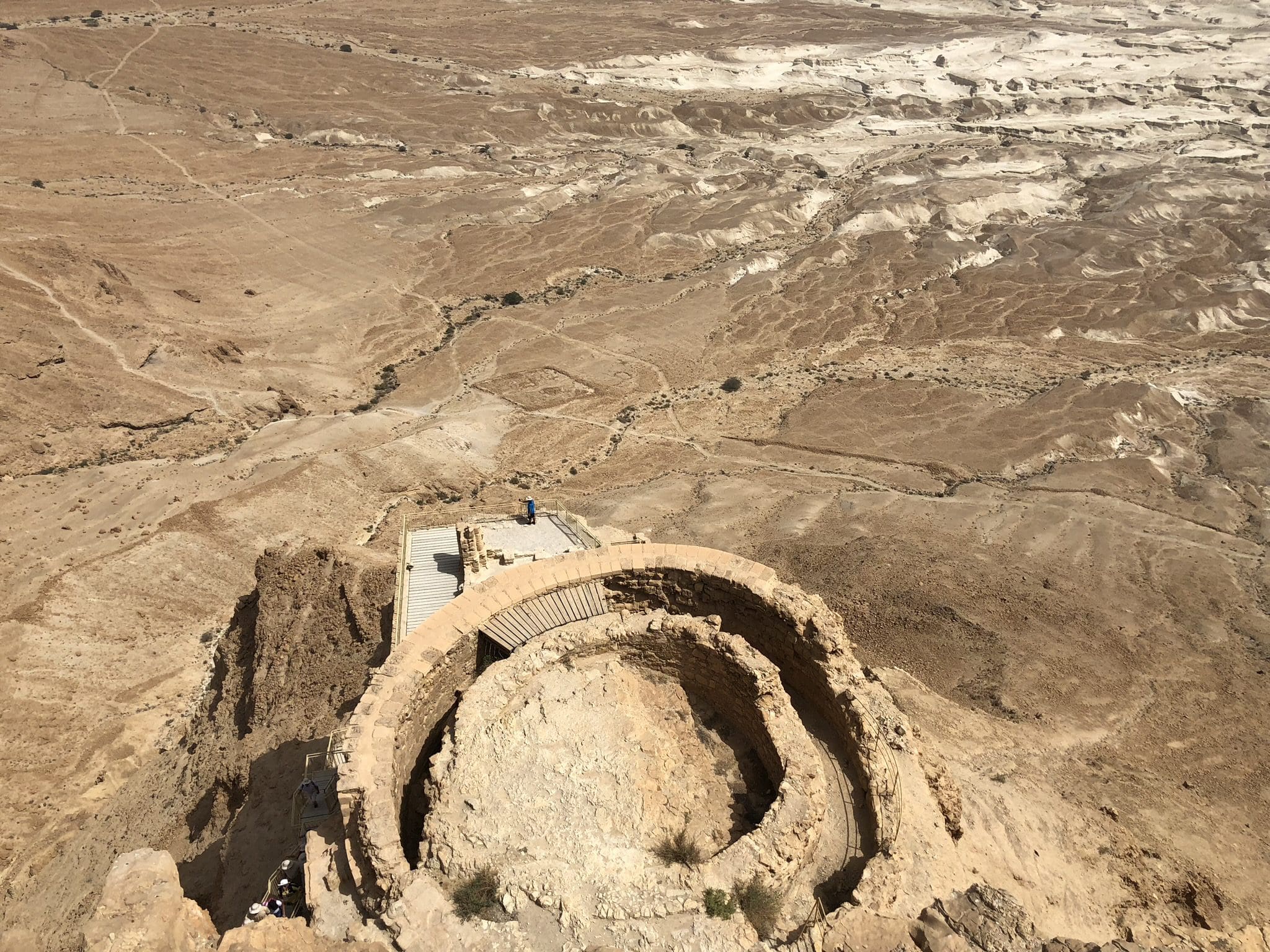Before my first trip to Israel, numerous friends had told me Masada would be my favorite stop – “It’s Israel’s Alamo!” they would say. It’s a beautiful place, overlooking the Dead Sea to the east. The innovative architecture made it all but impenetrable. And, yes, there are striking parallels to the Alamo.
Masada was a remote and massive fortress built by Herod the Great, designed to sustain its occupants for a long time even in the face of an entrenched enemy. The comparison to the Alamo isn’t completely wrong. Masada saw the vastly outnumbered “good guys” hold out against superior forces. And, of course, all the good guys in both stories eventually died when the superior force made it in.
Similar, but you have to do a lot of squinting to make Masada into the Alamo. Where the Alamo came at the beginning of Texas’ War of Independence, Masada was the final blow to the Jewish Great Revolt (A.D. 66-73).
The Jewish Zealots, who dreamed of political independence from the Romans, had been fighting for six years when Masada became their last stand. Built on the top of a plateau similar to an American mesa, nearly 1,000 Jews were able to hold out against 15,000 Roman forces.
Over the course of several months, the Romans built a massive siege ramp – still visible today as are the outlines of the legionaries’ camps – which they used to march up to Masada’s walls.
While the Texans at the Alamo fought the advancing Mexicans to the death, the Jewish rebels took their own lives before the Romans could enter.
The Roman historian Josephus, a former Jewish general, wrote that the zealots preferred to take their own lives rather than be paraded around as a conquered people. The Alamo defenders, you will recall, were told they would die unless they surrendered.
There was a lot of death at Masada and the Alamo, but with big differences. One group became a footnote in the history of Roman conquest, the other inspired and mobilized a people to defeat what was the greatest military power in the hemisphere.
By choosing suicide at Masada, the Jewish rebels spared themselves the personal embarrassment of being conquered, but that did little good for their fellow countrymen left suffering under the Roman yoke. For those zealots, death was not a sacrifice made to the benefit of others, it was the prideful way out.
In choosing to fight, knowing their own death was all but inevitable, the Alamo defenders hoped to inspire their countrymen to fight a tyrannical and murderous regime. They sacrificed themselves for the cause of liberty.
The lesson I have taken from Masada and the Alamo is that my obligation isn’t to be victorious, but to be faithful. Despite the odds, despite the peril, despite the risk, we must keep fighting.





